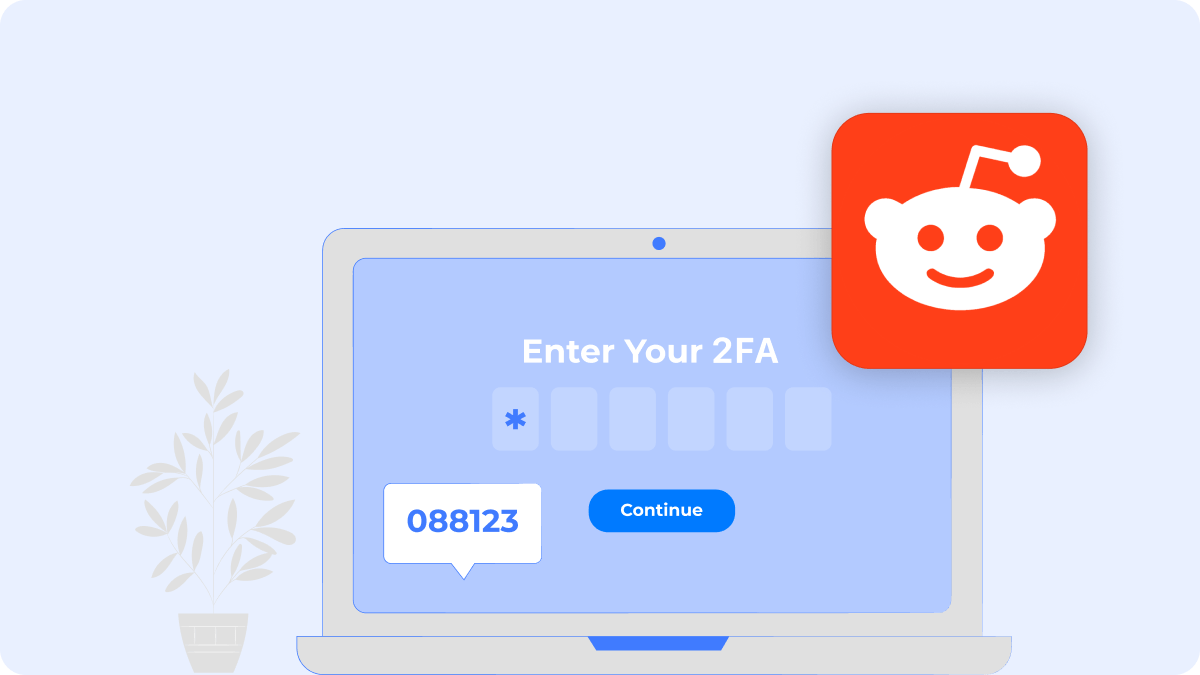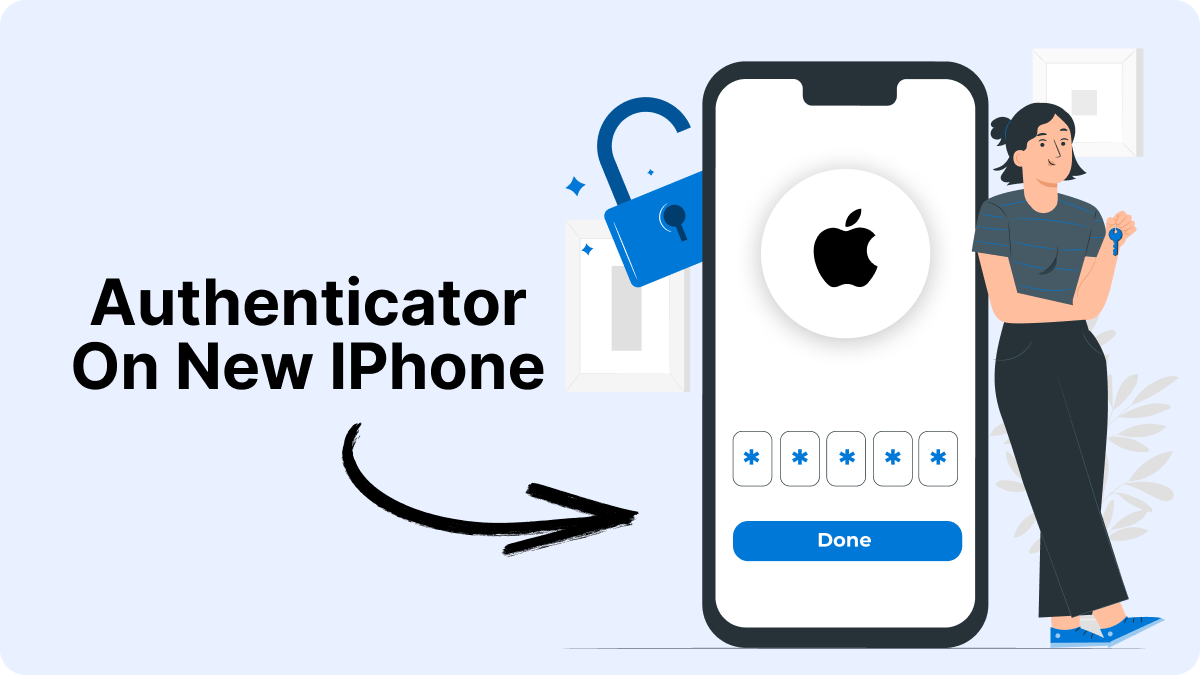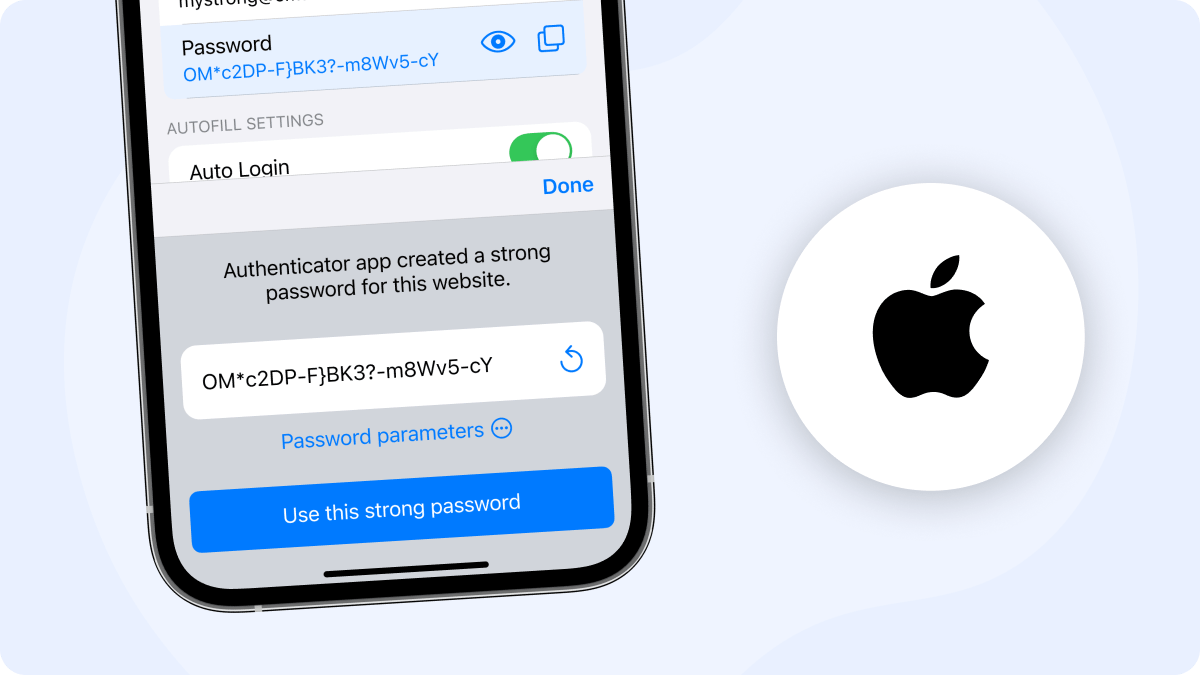
Which Authenticator App is Best for Reddit? 2025 Guide
By Waseem A.
24 min read

How to set up authenticator app on new iPhone is an essential step to secure your online accounts with two-factor authentication (2FA). Whether you're switching to a new iPhone or upgrading your device, transferring your authenticator app settings can seem like a daunting task. But don't worry—this step-by-step guide will walk you through the process of setting up an authenticator app, ensuring your accounts stay safe and secure.
In today's digital age, securing your online presence is more critical than ever. An authenticator app adds an extra layer of security, making it much harder for hackers to access your personal accounts. Knowing how to use apple authenticator app can help protect your online identity and prevent unauthorized access. Let's dive into the process to ensure you're fully equipped to use this feature on your new device.
Authenticator 7 — The most versatile authenticator app available. It's highly secure, user-friendly, and works seamlessly across multiple platforms.Get started with Authenticator 7today and experience next-level security for your accounts!
The Apple Authenticator app is a useful method for enabling two-factor authentication (2FA) for your accounts. While iPhones don't come with a built-in authenticator app, Apple's iCloud Keychain offers a secure method for storing authentication data. However, for a more versatile option, there are third-party authenticator apps that you can download, such as Authenticator 7.
Before you can start using an authenticator app on your iPhone, you first need to know how to download and how to activate authenticator app on iphone. If you don't already have it installed, you can find various apps like Google Authenticator, Microsoft Authenticator, or Authenticator 7 in the App Store. Once installed, follow these steps to set it up:
Using the authenticator app on your iPhone is straightforward once you've set it up. When prompted by a service you’re trying to log into, simply open the app, retrieve the current code, and enter it on the login screen. This ensures that only you can access your account, even if someone has your password.
If you use the authenticator app for more than one account, it's easy to keep track of multiple services. Most apps, including Authenticator 7, display a list of all linked accounts, each with a unique code that refreshes every 30 seconds. Label each account appropriately to easily find the one you're looking for when logging in.

Once you've activated the authenticator app on your iPhone, it will generate a unique code for each of your linked accounts every 30 seconds. Each time you log into an account that requires two-factor authentication, open the app, find the account, and enter the code displayed. Remember that these codes are time-sensitive, so use them promptly.
If you need to change or update your authenticator settings on iPhone, it's simple. You can remove or add accounts directly through the authenticator app’s interface. Always ensure that you’re using the latest version of the app for optimal performance.
To activate the authenticator app on your new iPhone, the key step is linking it with your accounts through the two-factor authentication setup process. After scanning the QR code or entering the manual key for each account, the app will start generating verification codes. This ensures that only you can access sensitive information.
Setting up and using an authenticator app on your new iPhone is a crucial step in ensuring the security of your online accounts. By following these simple steps, you can activate the app, link it to your accounts, and start generating codes for two-factor authentication. Knowing how to set up an authenticator app on your new iPhone will give you peace of mind and protect your digital identity from unauthorized access.
You can transfer your authenticator app to your new iPhone by downloading the app on the new device, logging into your accounts, and setting up two-factor authentication with each service.
Yes, most authenticator apps generate codes locally on your iPhone, so you don’t need an internet connection to use them.
If you lose access to your authenticator app, most services provide backup codes or an alternative method for account recovery. Be sure to set up backup options for such situations.
Many authenticator apps, including Authenticator 7, offer cloud backup features or the option to export and import accounts. Make sure to enable these features for easy recovery if you ever switch to a new device.
Yes, the authenticator app is secure, especially when used alongside two-factor authentication. It adds an extra layer of protection, making it more difficult for hackers to access your accounts even if they have your password.

By Waseem A.
24 min read

By Steve M.
8 min read

By Waseem A.
21 min read
Copyright ©2025 bestauthenticatorapp.com
Established in 2025, bestauthenticatorapp.com is dedicated to reviewing authenticator apps and exploring topics related to online security and account protection. Our team of cybersecurity experts, writers, and editors works tirelessly to help readers secure their digital lives. bestauthenticatorapp.com operates independently but collaborates with industry leaders to provide comprehensive insights into authentication We aim to deliver accurate and up-to-date reviews written according to strict editorial standards. These reviews prioritize honest and professional evaluations, considering both the technical capabilities and practical value of each product for users. While we strive for objectivity, rankings and reviews published on bestauthenticatorapp.com may take into account affiliate commissions we earn through links on our website. These commissions support our mission to provide free, high-quality information to our readers.